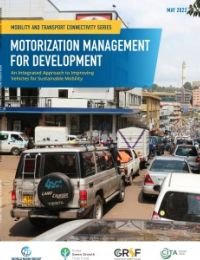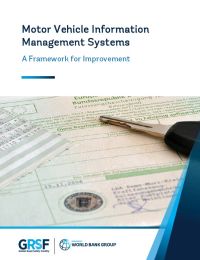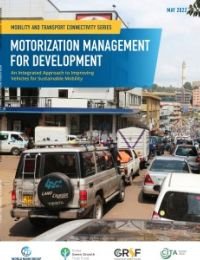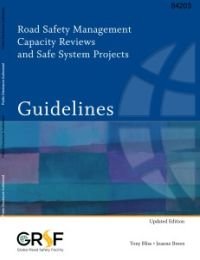Publications
1-5 of 5
-
Road Safety Management
Motor Vehicle Information Management Systems: A Framework for Improvement
March 2025
-
Road Safety Management
Road Safety Management Capacity Reviews and Safe System Projects Guidelines
May 2013
-
Specify a management and investment framework to overcome institutional capacity barriers and support the successful implementation of road safety interventions;
-
Provide practical procedures designed for application at a country level to accelerate knowledge transfer and sustainably scale up investment to improve road safety results;
-
Ensure that institutional strengthening initiatives are properly sequenced and adjusted to the absorptive and learning capacity of the country concerned.
-
Road Safety Management
Análisis de la Capacidad en Seguridad Vial y Proyectos de Sistema Seguro (Spanish)
May 2013
- Especificar un marco de gestión e inversión para superar las barreras de capacidad institucional y apoyar la implementación exitosa de intervenciones de seguridad vial;
- Proporcionar procedimientos prácticos diseñados para su aplicación a nivel de país para acelerar la transferencia de conocimientos y aumentar de manera sostenible la inversión para mejorar los resultados de seguridad vial;
- Garantizar que las iniciativas de fortalecimiento institucional estén debidamente secuenciadas y ajustadas a la capacidad de absorción y aprendizaje del país en cuestión.
-
Road Safety Management
Analyse de Capacité en Sécurité Routière et Projets de Système Sûr (French)
May 2013
- Spécifier un cadre de gestion et d'investissement pour surmonter les obstacles liés aux capacités institutionnelles et soutenir la mise en œuvre réussie des interventions de sécurité routière ;
- Fournir des procédures pratiques conçues pour être appliquées au niveau national afin d'accélérer le transfert de connaissances et d'accroître durablement les investissements pour améliorer les résultats en matière de sécurité routière ;
- Veiller à ce que les initiatives de renforcement institutionnel soient correctement séquencées et ajustées à la capacité d'absorption et d'apprentissage du pays concerné.

The rapid growth of motorization worldwide has brought both opportunities and challenges, impacting health, resource consumption, and accessibility. Effective management of motor vehicle fleets is crucial for maximizing benefits while minimizing negative consequences. This report presents a framework for improving Motor Vehicle Information Management Systems (MVIMS) to enhance public policy outcomes.
A well-structured MVIMS can support regulatory efforts by improving oversight of used vehicle imports, ensuring compliance with vehicle safety and emissions standards, facilitating periodic inspections, and strengthening vehicle insurance systems. The report highlights key findings from a survey of MVIMS practices in 13 low- and middle-income countries, revealing challenges in data integration, institutional coordination, and information accessibility.
By adopting best practices and strengthening governance, MVIMS can play a critical role in enhancing road safety, environmental sustainability, and transport efficiency. The report outlines a strategic pathway—Assess, Envision, Plan, Implement, and Monitor—to guide countries in developing robust MVIMS that support effective transport management.

Across the developing world, countries are experiencing rapid growth in urbanization and motorization. While high motorization rates potentially meant hat more people will be able to claim the benefits of improved accessibility to goods and services as a consequence of enhanced mobility, there are questions about the sustainability of this future. Will countries be able to build and maintain infrastructure to accommodate increasing numbers of vehicles? Will the increasing number of vehicles and their characteristics support attainment of the Sustainable Development Goals (SDGs) Will they put in jeopardy countries’ ability to meet their climate commitments under their Nationally Determined Contributions (NDCs)? From a development impact standpoint, the nature of a country’s motor vehicle stock and how it grows affects three key and tangible outcomes.
First, the quality of the motor vehicle stock affects road safety outcomes—that is, the number of people killed or seriously injured in motor vehicle crashes. The characteristics of vehicles and their fitness or roadworthiness can affect fatality and serious injury outcomes. Second, the quality of the motor vehicle fleet affects air quality, particularly in cities. Motor vehicles are a key source of harmful air pollution, including carbon monoxide (CO), fine particulates (PM2.5), sulfur oxides (SOx), and ozone precursors (oxides of nitrogen and various hydrocarbons), and the amount of these pollutants they emit is directly related to how the vehicle was built and how well it is maintained. Finally, the profile of the vehicle fleet—what is the size and weight of vehicles in the fleet, how big are their engines, what kind of power control technology do they use, and how did their manufacturers engineer the technology of the vehicle to balance power with efficiency—affects the (fossil) fuel consumption of the vehicle stock as a whole, and, consequently, the greenhouse gas (GHG) emissions profile of the road transport sector.
This report presents the World Bank’s Motorization Management (MM) framework, which is intended to support client countries in the development of policies and measures aimed at managing vehicle stocks in a proactive, phased, and systematic manner to make them safer, cleaner, and more fuel efficient. The MM framework reflects a series of policy considerations and programs that can be implemented to improve the quality of fuels and vehicles in a country’s stock.

The Road Safety Management Capacity Reviews and Safe System Projects Guidelines have been designed to assist country road safety professionals, World Bank and regional development bank staff, international consultants, community groups, private sector organizations, and all other global, regional and country partners and stakeholders to conduct capacity reviews and prepare follow-up road safety projects in a variety of low and middle-income countries and investment settings.
The purpose of the Guidelines is to:
The Guidelines emphasize managing for results and the associated strengthening of country road safety management systems, with special attention being paid to the role of the lead road safety agency in ensuring institutional effectiveness and efficiency in program delivery. They highlight the importance of addressing all elements of the road safety management system, taking a staged approach to country road safety investment, and targeting the highest concentrations of deaths and injuries across the road network.
For more information visit this page.
This report is also available in:

Las Directrices para los proyectos de sistemas seguros y las revisiones de la capacidad de gestión de la seguridad vial se han diseñado para ayudar a los profesionales de la seguridad vial de los países, al personal del Banco Mundial y de los bancos regionales de desarrollo, a los consultores internacionales, a los grupos comunitarios, a las organizaciones del sector privado y a todos los demás socios y partes interesadas mundiales, regionales y nacionales a realizar revisiones de la capacidad y preparar proyectos de seguimiento de la seguridad vial en una variedad de países de ingresos bajos y medios y entornos de inversión.
El propósito de las Directrices es:
Las Directrices hacen hincapié en la gestión para resultados y el fortalecimiento asociado de los sistemas de gestión de la seguridad vial de los países, prestando especial atención al papel del organismo líder de seguridad vial para garantizar la eficacia y eficiencia institucional en la ejecución del programa. Destacan la importancia de abordar todos los elementos del sistema de gestión de la seguridad vial, adoptar un enfoque por etapas para la inversión en seguridad vial del país y centrarse en las mayores concentraciones de muertes y lesiones en toda la red de carreteras.

Les Lignes directrices pour les examens des capacités de gestion de la sécurité routière et les projets de systèmes sûrs ont été conçues pour aider les professionnels de la sécurité routière des pays, le personnel de la Banque mondiale et des banques régionales de développement, les consultants internationaux, les groupes communautaires, les organisations du secteur privé et tous les autres partenaires et parties prenantes mondiaux, régionaux et nationaux à mener des examens des capacités et à préparer des projets de suivi de la sécurité routière dans divers pays à revenu faible et intermédiaire et contextes d'investissement.
L'objectif des Lignes directrices est de :
Les Lignes directrices mettent l'accent sur la gestion axée sur les résultats et le renforcement associé des systèmes de gestion de la sécurité routière des pays, une attention particulière étant accordée au rôle de l'agence principale de sécurité routière pour assurer l'efficacité et l'efficience institutionnelles dans l'exécution des programmes. Ils soulignent l’importance de prendre en compte tous les éléments du système de gestion de la sécurité routière, d’adopter une approche progressive en matière d’investissement dans la sécurité routière nationale et de cibler les concentrations les plus élevées de décès et de blessés sur l’ensemble du réseau routier.





